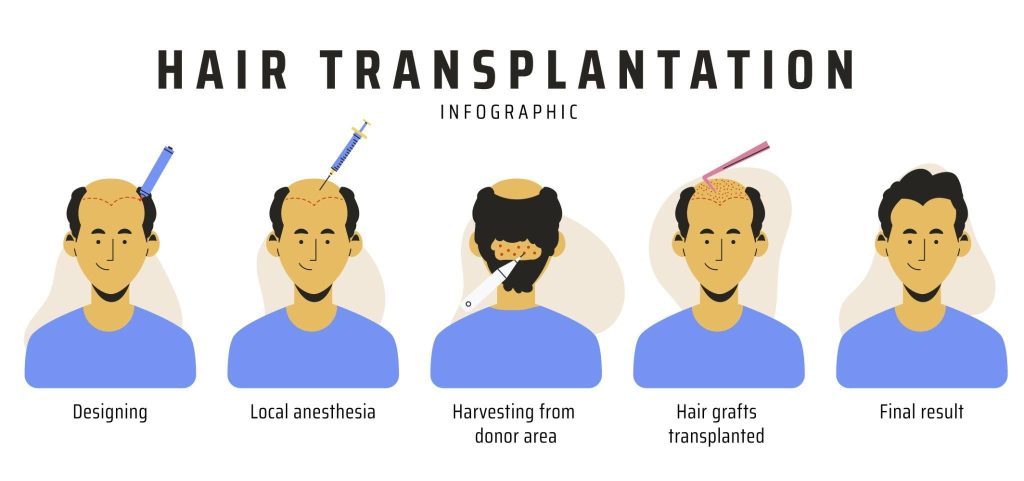Hair Transplant Stages
In order to offer patients the results they seek and the confidence they need, hair transplants rely on a number of interrelated factors. Analysis and debate of the hair transplant procedure begins with a thorough examination of past cases. A hair transplant specialist is available to visit with the client at this time to assess the donor area and the patient’s unique pattern of hair loss.
Clients are urged to conduct some pre-operative trials before undergoing hair transplantation for optimal outcomes. Some examples of these habits are not drinking or smoking. The patient receives comprehensive pre-op instructions from their surgeon. Preoperative preparation is done so that patients are in the greatest possible health for surgery and complications are kept to a minimum.
Donor hair is taken from the back of the head where balding is not as noticeable. Spots like this tend to appear on the back and sides of a person’s head. Follicular unit extraction and follicular unit transplantation are the two techniques used to get donor hair. Donated hair follicles are carefully plucked under the microscope from a surgically excised slice of scalp. In contrast, FUE requires the removal of individual hair follicles from a donor scalp using a surgical tool. What’s best for a patient is based on the surgeon’s recommendations and their unique circumstances.
Beginning of Hair Transplant
A doctor will create recipient sites in regions where hair loss or thinning has occurred naturally. Maximum coverage and a natural appearance in hair growth is the goal! They need meticulous planning and precise positioning of the recipient sites. Now, factors such as hair density, direction, and angle are taken into account. The success of a hair transplant treatment relies heavily on the accuracy and expertise of the physician performing the process.
After determining appropriate sites for the hair grafts, the doctor will position them carefully. Hair follicles are meticulously placed into the small incisions created in the preceding phase. Accuracy, attention to detail, and creative ability are all required for results that look natural. The time-consuming graft insertion method is crucial to getting a desirable aesthetic outcome.
After Transplant Stages
Following hair transplantation, patients enter the post-operative care and rehabilitation phase. The surgeon provides detailed instructions on how to care for the donated space, including how often to clean, when to take drugs, and what to avoid doing to facilitate a speedy recovery. Redness, swelling, and itching in the treated region are all common in the first few days after surgery. Proper aftercare is essential for a successful hair transplant recovery and for realizing the full potential of the procedure.
What Transplanted Hair Looks Like After Surgery
If you are done with the transplantation process, say hello to your new hair! However, you will notice that your hair might not look like what it’s supposed to. That is completely normal, and you do not have to worry. Before growing like normal hair, the transplanted ones need to heal first, and this can take several months. After these months, it will be completely normal depending on the quality of your surgery.
For the first few weeks, your scalp might look swollen, and your hair will look pointy. Do not be afraid as this will change in time. After almost six months, you will see shocking results that will satisfy you.
The healing is done now, which can take several months, people enter the time of hair growth and eventual results. The newly implanted hairs go through three phases here. They are shedding, hibernation, and a new growth phase. Before shedding, it is not possible for new hair to grow like it is natural hair. During the hibernation process, you can think of it like your hair is gaining strength to grow more. And finally, with the new growth phase, the phases of hair transplant will finish and you can enjoy your new hair. New hair growth often becomes visible two to four months following surgery. The ultimate results of the treatment are accomplished by the gradual thickening and volumetric expansion of the implanted hairs. If you have any questions regarding the process or if you see any differences than what it should be, you can always talk to the professional who did the surgery. They will give the best advice for aftercare.


